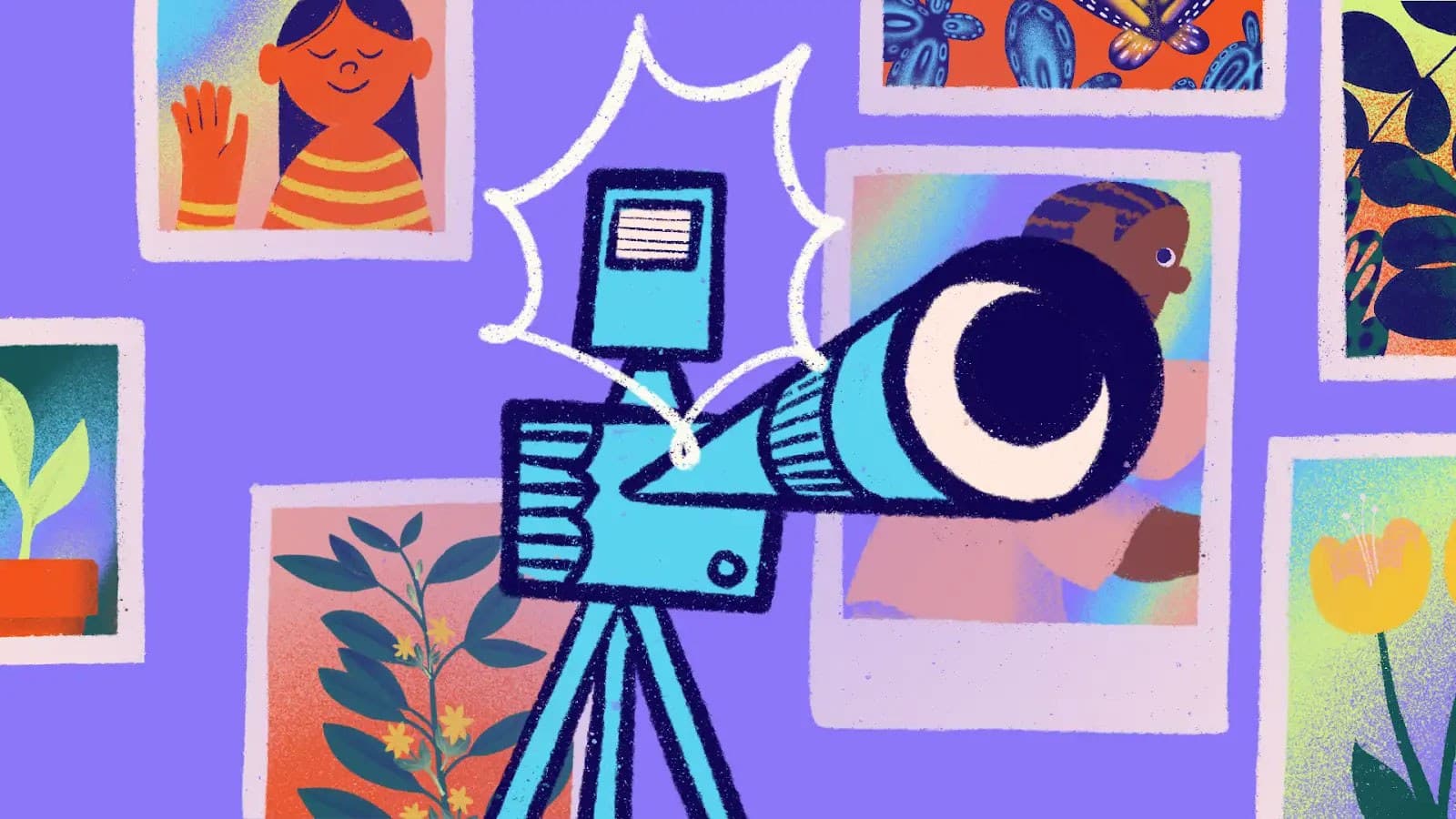Why Nonprofits Need In-House Creative Leads
A conversation with creatives bringing this strategic role to life today.
By Deroy Peraza, Partner at Hyperakt
In-house design leadership can have profound effects on elevating nonprofit branding and storytelling. People in this role might have different titles: Creative Director, Design Director, Design Lead, Head of Design are common ones. For simplicity, we’re going to wrap those all up under the moniker Creative Lead.

Illustration by Merit Myers
This role is still new in the social impact space, and primarily seen at foundations who focus on telling the stories of their nonprofit grantees—but its importance is becoming undeniable. Creative Leads help organizations navigate a world of ideas, not just imagery, and connect their missions to the audiences they seek to inspire.
Through conversations with Archie Bell (Creative Director, Ford Foundation), Victor Ng (former Creative Director, Ford Foundation), Pierre Tardif (Creative Director, Mellon Foundation), and Nick Fabiani (Creative Lead, Robert Wood Johnson Foundation), a theme emerges:
Creative Leads are not just brand managers—they are philosopher-historians, strategic catalysts, and translators. They navigate the interplay between behavior and reputation while inspiring change from within.
Defining the Role: Translator of Languages
One of the most critical skills for a Creative Lead in the nonprofit sector is the ability to serve as a translator—not just of language, but of values, processes, and mindsets
Victor Ng notes: “You have to be a really effective translator of multiple kinds of languages. The language of business, design—obviously, with your team—and operations. You are likely going to be the most visible creative person in the whole organization, especially in places that don’t have a deep familiarity with design. That means you have to enter from a place of humility.”
Archie Bell echoes this sentiment but adds a crucial twist—Creative Leads are not just translators, they’re also connectors: “I've always been the translator or a catalyst between business and creative. I'm someone who sets guidance and connects teams, so they don't behave as individual contributors.”
This means building trust and bridging gaps between departments—communications, development, programs, strategy—and guiding them toward shared goals. Collaboration, not isolation, is the core ethos. Archie adds: “I hate ‘ta-das.’ Don’t put your head down, work alone, and suddenly pop up with your finished work. The value lies in active collaboration and sharing the creative process.”
The goal is clear: Creative Leads partner with program teams to transform complex, technical work into content that resonates. They make the organization’s values, priorities, and strategies visible and accessible—helping more people understand not just what the organization does, but why it matters. By translating nuance into clarity and aligning diverse perspectives, they bring the brand to life in ways that foster connection, trust, and shared purpose.
More Than Design: A World of Words and Ideas
The Creative Lead role requires comfort operating in a space dominated by ideas and words—not just visual design. Nick Fabiani observes: “You’re constantly thinking about how concepts and strategies come to life, which is very different from the for-profit sector.” Pierre Tardif puts it this way: “Our storytelling prioritizes the people we serve.... It’s about lifting up grantees’ stories and showing their humanity.”
Archie brings in another important distinction—in the nonprofit world, creative work is fundamentally relational, not transactional: “There's more care and effort required because we’re building stories around grantees and community partners. Quality is measured differently—it’s about how authentically it resonates rather than immediate ROI.”
He also sees the slower pace of nonprofit work as a strategic opportunity: “I welcome the slower pace now. It gives me an opportunity to appreciate the care needed for people to feel good about the work.”
The Challenges of Building Trust
In-house Creative Leads at nonprofits are often entering spaces where branding, design and other creative work is still a relative novelty. Fabiani notes: “Unlike an agency, where you’re hired for your expertise and credibility is built into the contract, you’re just a colleague here. You have to earn trust and build relationships internally before you can push big ideas forward.”
Ng reminds us this role requires patience, emotional intelligence, and a deep understanding of the organization’s mission: “You have to prove the value of creativity through your work by showing how it supports the mission.”
Behavior Change from Within
One of the most significant impacts of a Creative Lead is driving internal culture change. Fabiani shares: “This role isn’t just about adding value; it’s about proposing real change in how we work. It’s about shifting from a ‘checkbox’ mentality—where we just churn out deliverables—to a space where we question why we’re doing something and how we can make it more effective.”
Tardif adds that being a “brand champion” is about inspiring colleagues to see the brand as a framework, not a rigid set of rules: “That builds excitement and ownership across the organization. It’s not about enforcing the brand—it’s about empowering people to live into it.”
Strategic Judgment and Cultural Fluency
Creative Leads are increasingly being called on not only for design chops but also for their judgment and cultural fluency.
Archie emphasizes: “Good judgment is essential. You need someone who can discern whether work is authentic, respectful, and genuinely representative of the communities we aim to support.”
In this way, creativity becomes a vehicle for equity: “With creativity comes openness to understanding, exploring, and respecting other cultures. Homogeneity is the enemy of creativity.”
Long-Term Brand Stewardship
Creative Leads help ensure that the brand grows in step with the organization. As Fabiani shares: “Brand isn’t a one-and-done thing. It grows with the organization…That alignment helps everyone see how their work connects to the organization’s mission.”
A Vital Investment in Mission and Message
Creative Leads are becoming indispensable to nonprofit and philanthropic organizations—not just for their design skills, but for their ability to translate strategy into storytelling, build trust across teams, and spark internal change. They’re bridge-builders—connecting departments, ideas, and communities with causes. By fostering collaboration, embracing cultural nuance, and grounding creativity in care, they help organizations fully live their missions and communicate them with clarity and heart.
As Archie Bell puts it, “It’s about building community through creativity. That’s what gives our work meaning—and that’s what makes it last.”
And it’s not just internal impact. We’ve seen firsthand how Creative Leads strengthen partnerships beyond the organization. Branding efforts are consistently more successful when they’re involved. As two-way translators, they ensure brands reflect the soul of the organization—and that teams feel ownership in bringing them to life.


